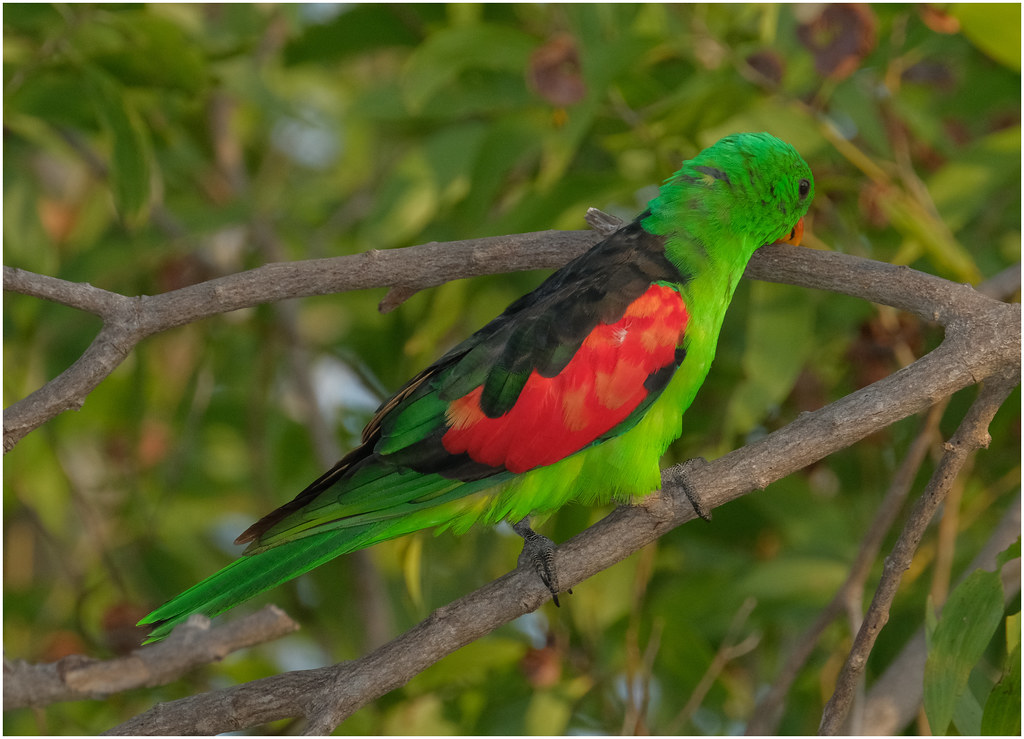The red-winged Parrot (Aprosmictus erythropterus) closely related to the Australian King Parrot. Although Red-winged Parrots eat seeds, fruits, buds, and blossoms in trees and shrubs, they differ in their feeding habits. The birds live in pairs or small groups rather than in large flocks, and they seldom gather for feeding.

As they scratch their heads, they push the foot forward under the wing, not over it, and their flights are more erratic with deep irregular wing beats and swooping undulations. In most cases, Red-winged Parrots visit the ground only to drink. Male Red-winged Parrots chatter softly while taking short flights around females when courting. In flight, he drops his wings and exposes the blue on his lower back as he alights on a branch. As he approaches the female, he draws his body plumage in tightly and, with his iris blazing, takes two or three slow steps towards her.
Red-winged Parrots are also called Crimson-winged Parrots. In addition to its long, round tail, the Red-winged Parrot measures about 320 mm in length. Green is the general color of the male bird’s plumage. The back of the head is slightly tinged blue. The lower back and rump are paler than the scapulars and upper back. The wing coverts of this parrot are rich red; the underwing coverts and wing bend are pale green.
There is a bit of green on the tail and a yellow tip. There is an orange-red color to the eyes, as well as an orange-coral color to the bill and cere. There are darker claws on the feet and toes, as well as mid-gray feet and toes. Females have dull green general plumage with yellow underpart washes. While the outer wings have red coverts. The pale blue color on the rump and lower back. Their eyes and feet are pale brown, and the bill and feet are similar to those of a male. Female immature are as mature as adult females. When males molt in their third year, they don adult colors. It is white-downed when it is young.
The contact call of the Red-winged Parrot is a sharp, metallic crillik-crillik. The alarm call is harsh screech, so it is easy to identify.
Nesting occurs in holes in trees, often near water, with egg chambers close to the ground. In addition to five, occasionally six eggs are laid; they are white, rounded, 31-32 x 25-26 mm in size.
During incubation, the female is responsible for the process; the male is responsible for feeding the chick. About five weeks after hatching, the young bird fledges. The average life span of the Red-winged Parrot is about 25 to 35 years.
In inland deserts and Lake Eyre and Darling River drainages, and along eucalypt woods along and near streams, the Red-winged Parrot occurs in abundance. There are irregular movements along the fringes of its range, however, making it a sedentary species. Southern New Guinea is also home to this species.
Read More: Crimson Rosella Life Spans, Call, and More







